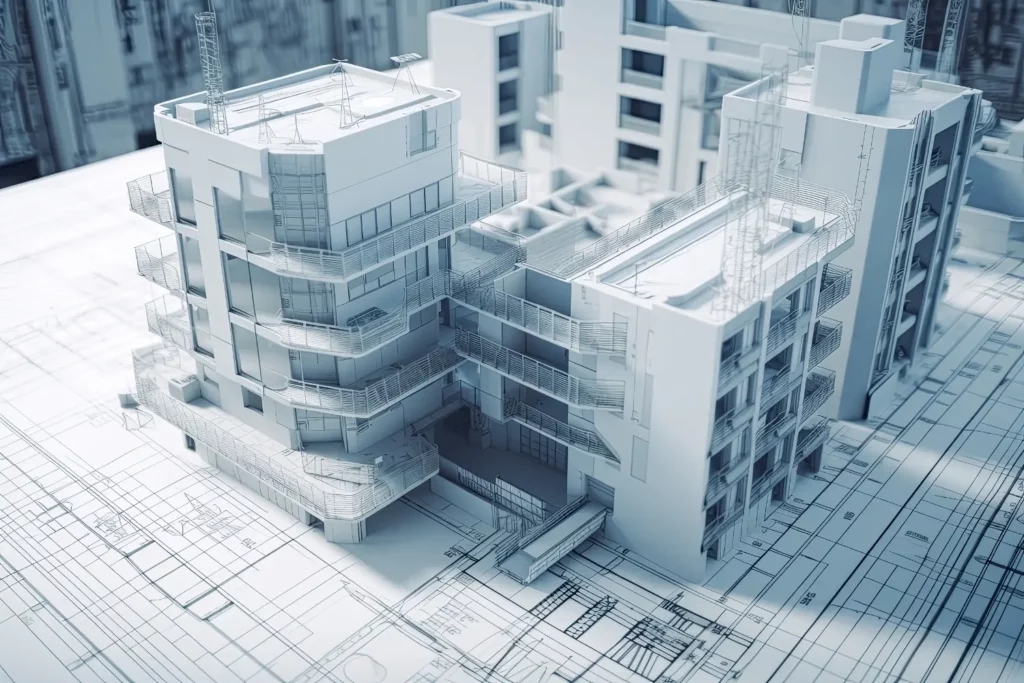In the realm of modern architecture and construction, the integration of technology has revolutionized the way we design, construct, and manage buildings. One such technological marvel that has reshaped the industry is Architectural Building Information Modeling (BIM) Services. This comprehensive exploration delves into the transformative power of Architectural BIM Services, uncovering the ways in which they enhance design, streamline workflows, and elevate the construction process.
The Evolution of Architectural BIM Services
Architectural Services have come a long way since their inception. They have evolved from simple 3D modeling tools to dynamic, data-rich platforms that enable architects, engineers, and construction professionals to collaborate seamlessly and make informed decisions throughout the project lifecycle.
Today’s architectural BIM solutions allow for perfect working together, early problem detection, and well-informed decision-making between architects, engineers, and construction experts. They have grown to be essential in optimizing processes, cutting errors, and bringing down project costs. These services, which offer cutting-edge solutions and sustainable design principles, will play an important part in determining the future of architecture as the building sector continues to change.
Data-Driven Design
The idea of data-driven design is at the foundation of architectural BIM services. BIM models are full of information, unlike standard 2D drawings. Each component of the model has data, from the dimensions and materials to the performance requirements. The design process is significantly impacted by this informed by data approach.
The performance and sustainability of a building may now be examined by architects easily as they consider change design options. This level of understanding enables more informed choices to be made early in the design phase, leading to more effective and affordable solutions.
Efficiency and Collaboration
One of the primary strengths of BIM Services is their ability to streamline workflows and enhance collaboration among project stakeholders. In a BIM environment, architects, engineers, contractors, and owners can work together in a virtual space, sharing real-time updates and revisions.
Efficiency and collaboration lie at the core of modern Architectural BIM Service, redefining the way we design and construct structures.
Design changes made by one team member are instantly visible to others, reducing the risk of conflicts and errors. This collaborative approach fosters better communication and coordination, ultimately leading to smoother project execution.
BIM Services also empower architects and clients with advanced visualization and simulation capabilities. Before construction begins, stakeholders can “walk through” the virtual building, experiencing the space in 3D. This not only aids in design validation but also helps clients better understand the final product.
Moreover, BIM allows for sophisticated simulations, such as energy analysis and clash detection. Architects can assess the building’s energy performance, daylighting, and thermal comfort, making adjustments to optimize efficiency and sustainability.
Cost Control and Sustainability
Cost control is a critical aspect of any construction project. Architectural BIM Services enable architects to create accurate quantity takeoffs and cost estimates directly from the BIM model. This level of precision eliminates the need for manual calculations and reduces the risk of budget overruns.
Sustainability is another key focus in today’s architecture. BIM facilitates sustainable design by providing tools to evaluate the environmental impact of design choices. Architects can assess factors like energy consumption, carbon emissions, and water usage, making it easier to create environmentally responsible buildings.
The Future of Architectural BIM Services
Architectural BIM Service will only get more powerful as technology develops. Design optimization and performance analysis are expected to benefit significantly from artificial intelligence (AI) and machine learning. The design and presentation process will be significantly improved by virtual reality (VR) and additional reality (AR).
The future of Architectural BIM (Building Information Modeling) Services is a thrilling landscape of innovation and transformation. As technology continues to advance, these services are set to become even more indispensable in the world of architecture and construction.
Generative Design, fueled by BIM Services, will usher in a new era of creativity. Architects will explore countless design possibilities, optimizing for factors such as cost, energy efficiency, and aesthetics with remarkable ease.
conclusion
In conclusion, Engisoftengineering Architectural BIM Services have transformed the way architects design and construct buildings. They bring data, efficiency, collaboration, visualization, and sustainability to the forefront of the design process. With the constant evolution of technology, the future of Architectural Services promises even greater innovation and efficiency in the world of architecture and construction. Designing with data is not just a trend; it’s a revolution that’s here to stay.

